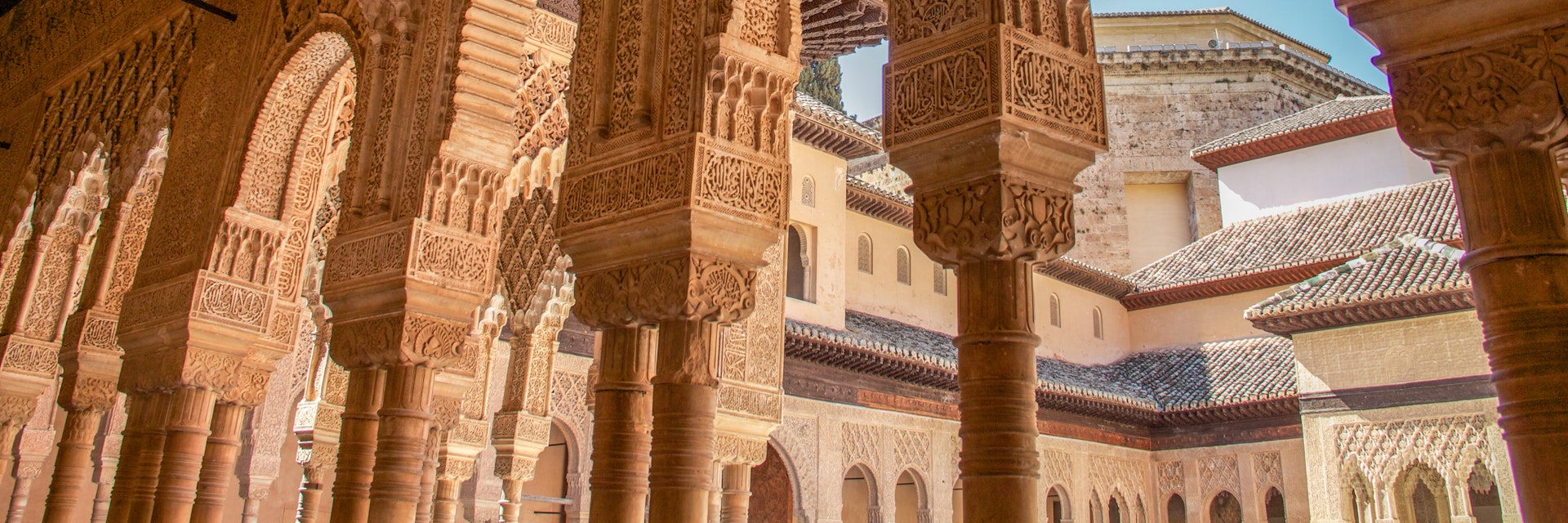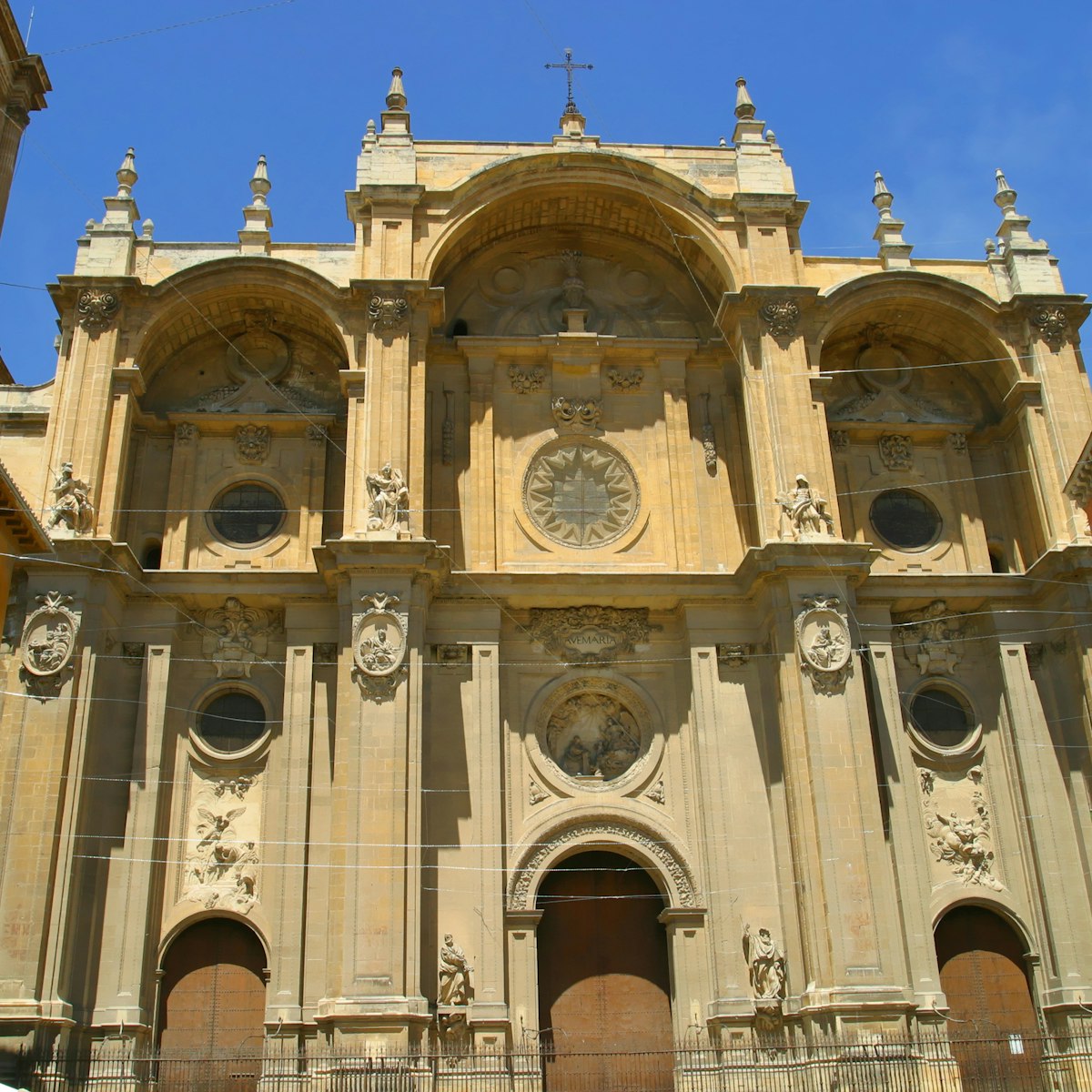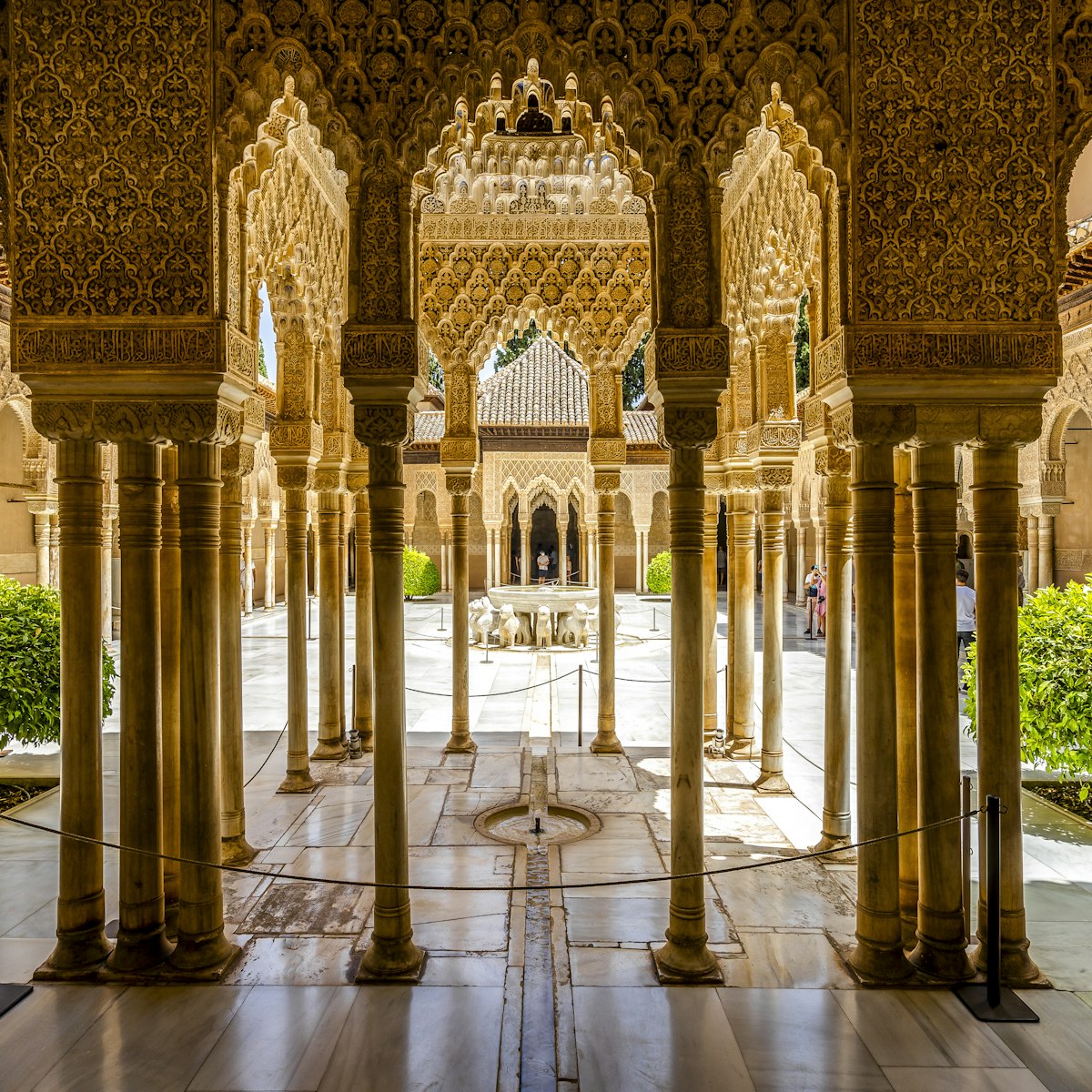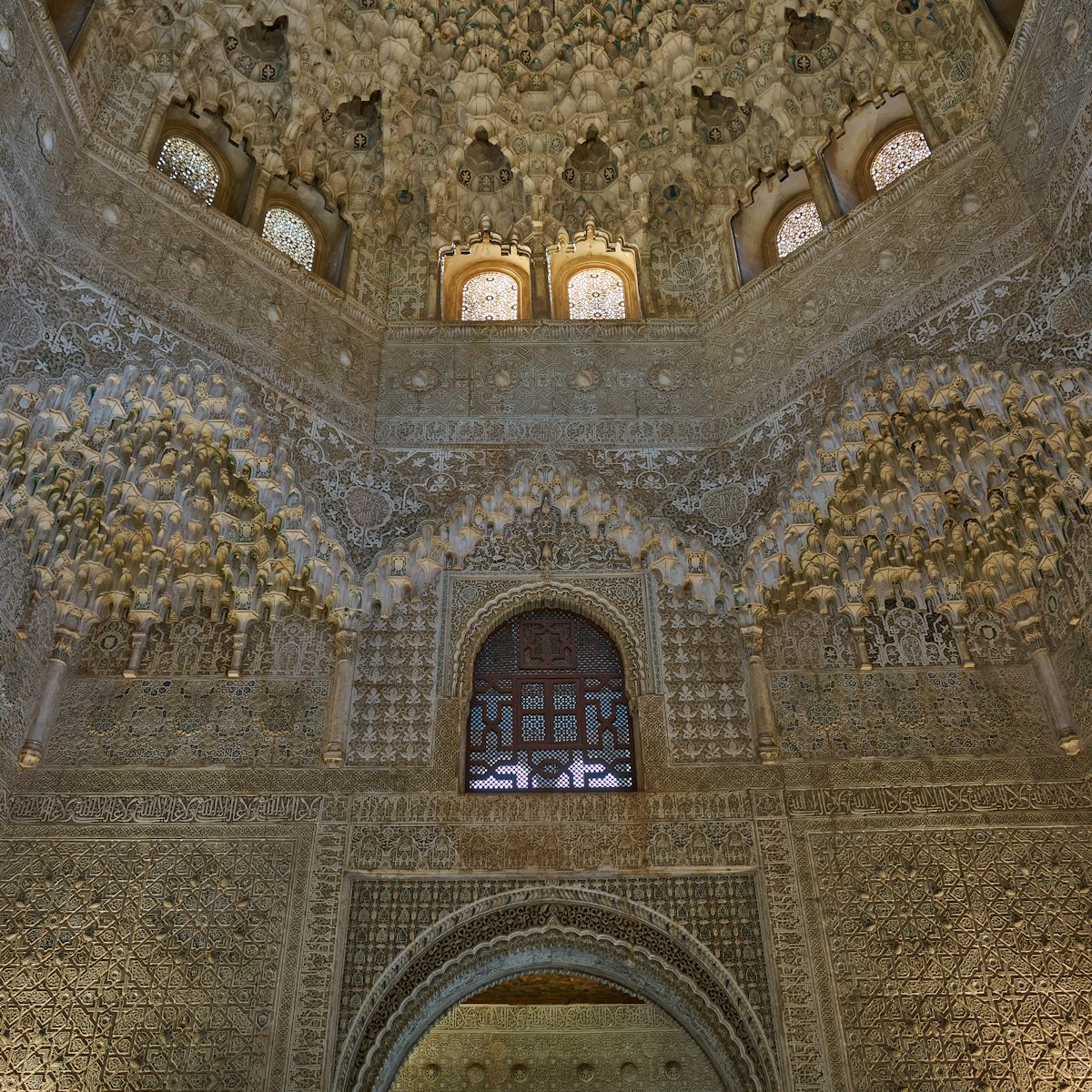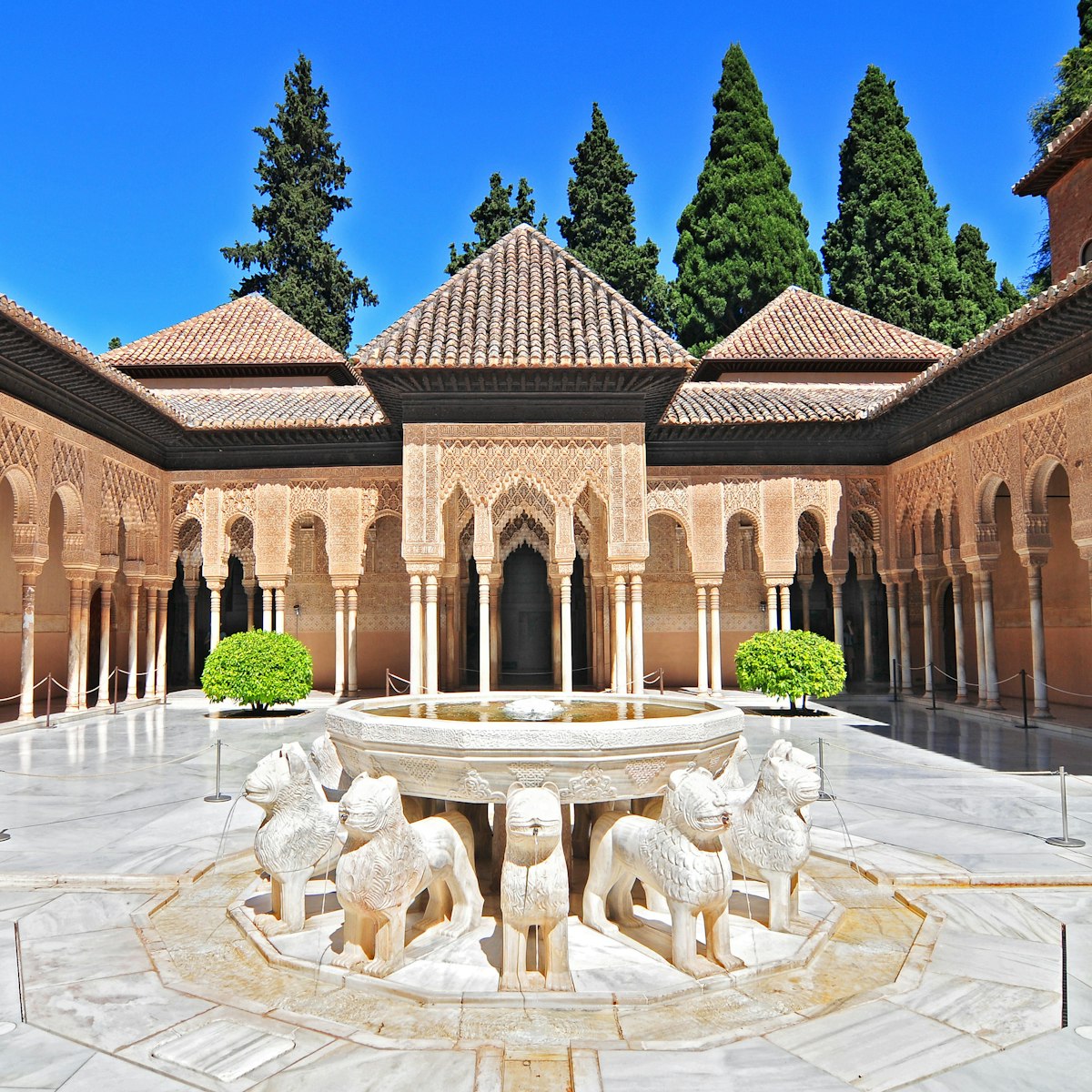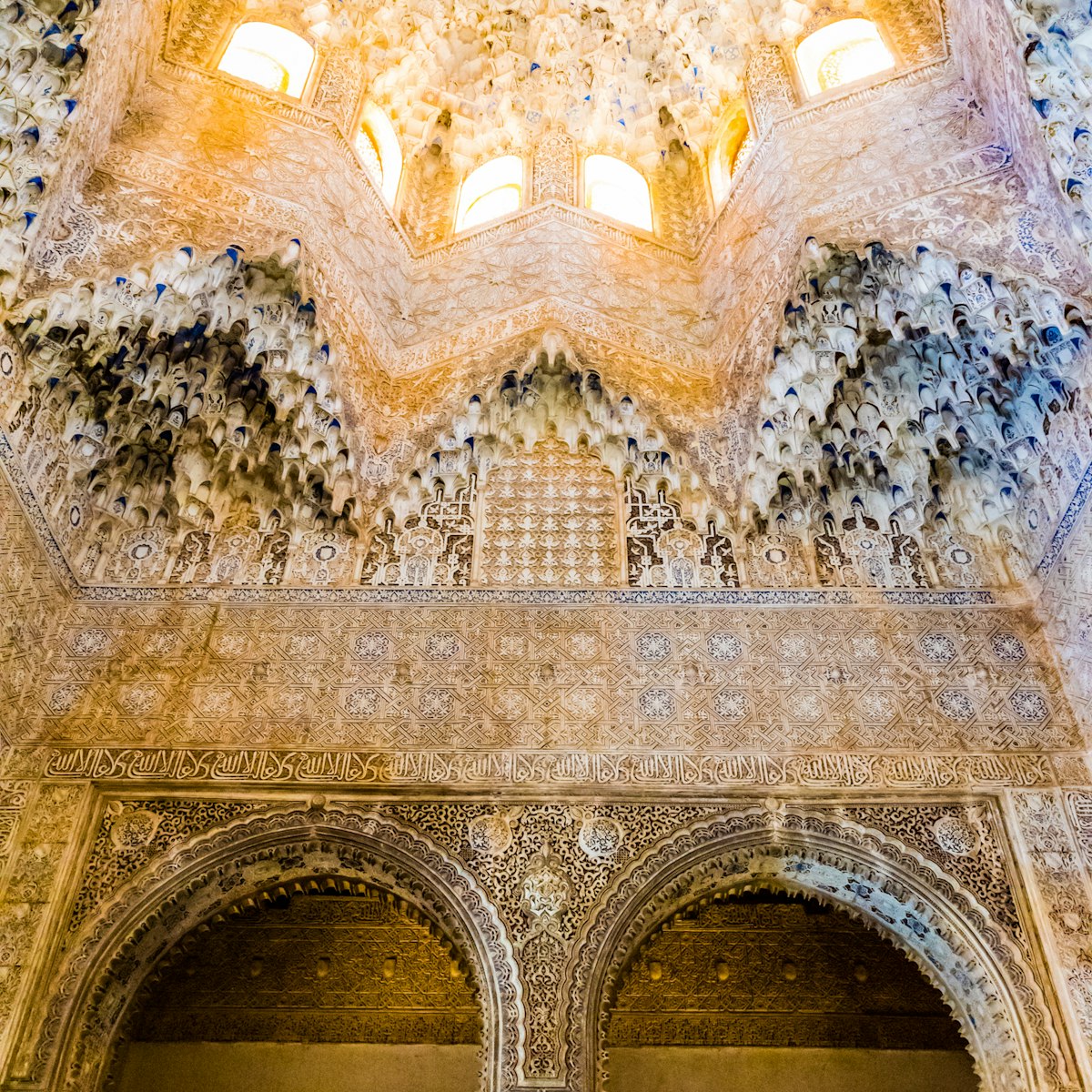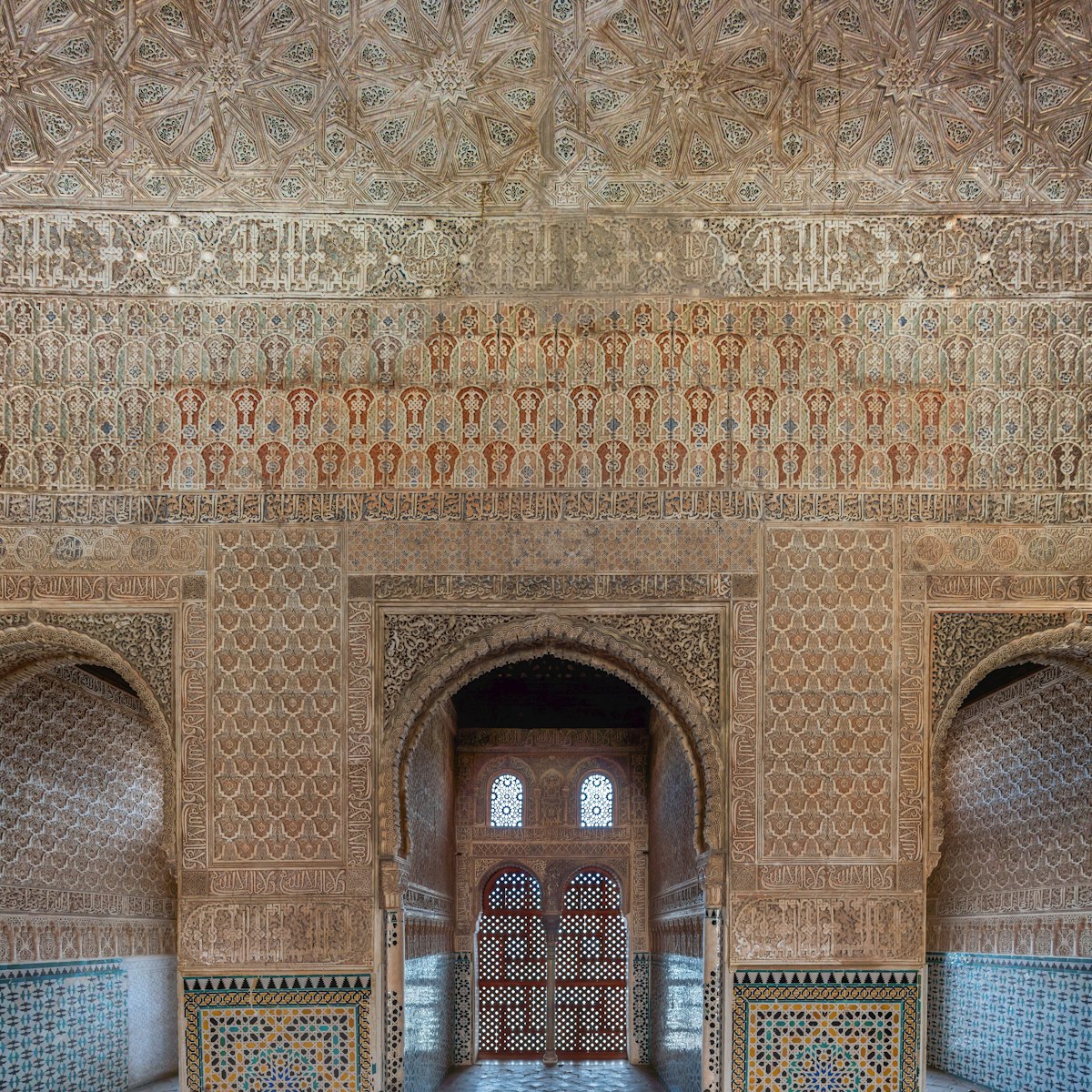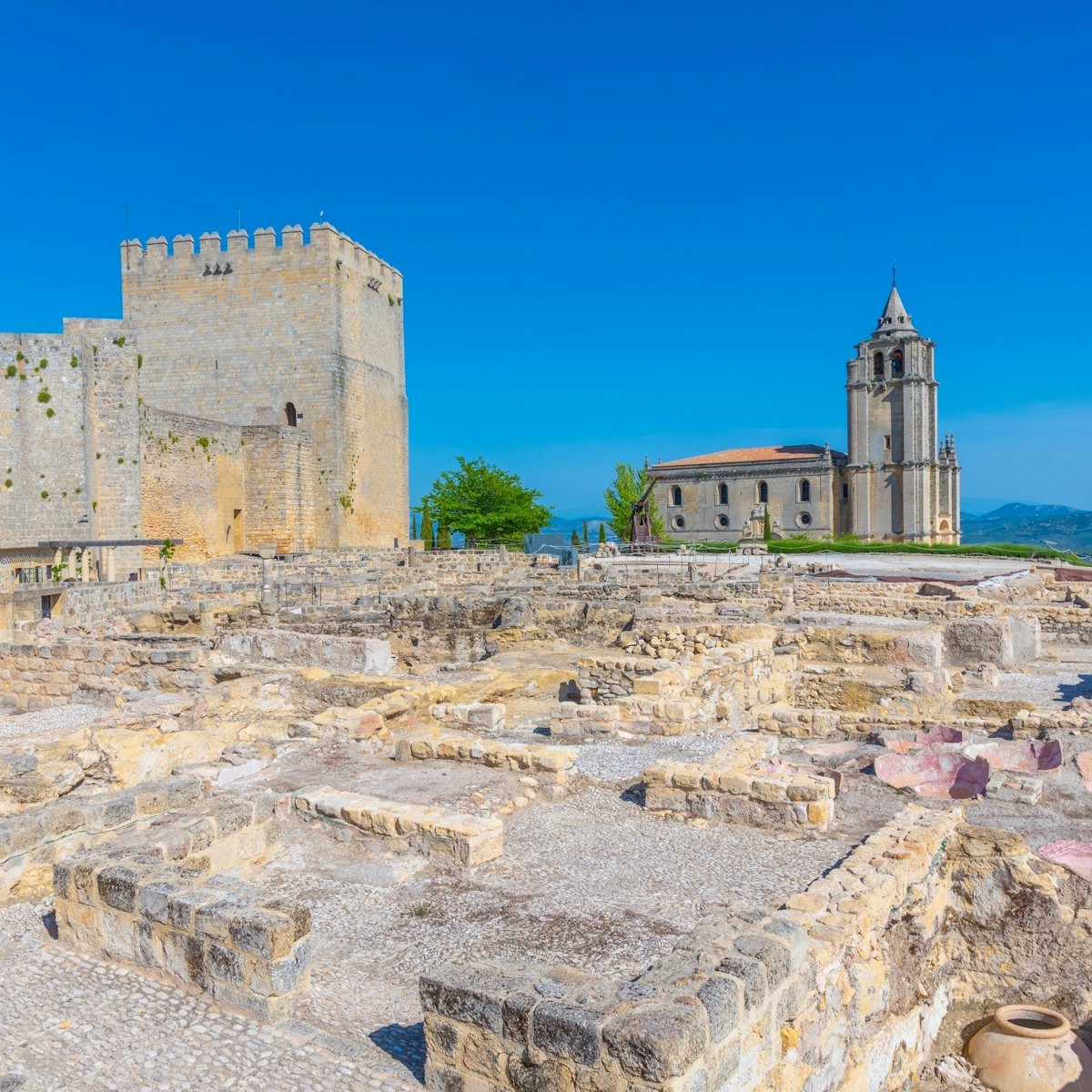The Alhambra is Granada’s – and Europe’s – love letter to Moorish culture. Set against the brooding Sierra Nevada peaks, this fortified palace started life as a walled citadel before becoming the opulent seat of Granada’s Nasrid emirs. Their showpiece palaces, the 14th-century Palacios Nazaríes, are among the finest Islamic buildings in Europe and, together with the Generalife gardens, form the Alhambra's great headline act. Tickets sell out, so book ahead; you’ll have to choose a time to enter the Palacios Nazaríes.
The origins of the Alhambra, whose name derives from the Arabic al-qala’a al-hamra (the Red Castle), are mired in mystery. The first references to construction in the area appear in the 9th century but it’s thought that buildings may already have been standing since Roman times. In its current form, it largely dates to the 13th and 14th centuries when Granada's Nasrid rulers transformed it into a fortified palace complex. Following the 1492 Reconquista (Christian reconquest), its mosque was replaced by a church and the Habsburg emperor Charles V had a wing of palaces demolished to make space for the huge Renaissance building that still bears his name. In the early 19th century, French Napoleonic forces destroyed part of the palace and attempted to blow up the entire site. Restoration work began in the mid-1800s and continues to this day.
Palacio de Carlos V & Around
From the southeastern entrance pavilion, a signposted path leads into the core of the complex, passing the 15th-century Convento de San Francisco, now the Parador de Granada hotel, where the bodies of Isabel and Fernando were laid to rest while their tombs were being built in the Capilla Real. A short walk further on brings you to the Iglesia de Santa María de la Alhambra, built between 1581 and 1618 on the site of the Alhambra's mosque.
Beyond the church, the Palacio de Carlos V clashes spectacularly with its surroundings. The hulking palace, begun in 1527 by the Toledo architect Pedro Machuca, features a monumental facade and a two-tiered circular courtyard ringed by 32 columns.
Inside the palace are two museums: the Museo de la Alhambra, which showcases an absorbing collection of Moorish artefacts, including the wood-carved door from the Sala de Dos Hermanas, and the excavated remains of the Acequia Real (Royal Water Channel); and the Museo de Bellas Artes, with 15th- to 20th-century artworks.
Alcazaba
Occupying the western tip of the Alhambra are the martial remnants of the Alcazaba, the site's original 13th-century citadel. The Torre de la Vela (Watchtower) is famous as the tower where the cross and banners of the Reconquista were raised in January 1492. A winding staircase leads to the top where you can enjoy sweeping views over Granada's rooftops.
Palacios Nazaríes
The Alhambra's stunning centrepiece, the palace complex known as the Palacios Nazaríes, was originally divided into three sections: the Mexuar, a chamber for administrative and public business; the Palacio de Comares, the emir's official and private residence; and the Palacio de los Leones, a private area for the royal family and harem. Access is limited to 300 people every half hour.
Entrance is through the Mexuar, a 14th-century hall where the council of ministers would sit and the emir would adjudicate citizens' appeals. Two centuries later, it was converted into a chapel, with a prayer room at the far end. Look up here and elsewhere to appreciate the geometrically carved wood ceilings and elegant tiling.
From the Mexuar, you pass into the Patio del Cuarto Dorado, a courtyard where the emirs gave audiences, with the Cuarto Dorado (Golden Room) on the left, looking out on the Albayzín. Opposite the Cuarto Dorado is the entrance to the Palacio de Comares through a beautiful facade of glazed tiles, stucco and carved wood. A dogleg corridor (a common strategy in Islamic architecture to keep interior rooms private) leads through to the Patio de los Arrayanes (Courtyard of the Myrtles). This elegant patio, named after the myrtle hedges around its rectangular pool, is the central space of the palace built in the mid-14th century as Emir Yusuf I’s official residence.
The southern end of the patio is overshadowed by the walls of the Palacio de Carlos V. To the north, in the 45m-high Torre de Comares (Comares Tower), the Sala de la Barca (Hall of the Boat), with its sculpted ceilings, leads into the Salón de los Embajadores (Chamber of the Ambassadors; also the Salón de Comares), where the emirs would have conducted negotiations with Christian emissaries. The room's domed marquetry ceiling contains more than 8000 cedar pieces in an intricate star pattern representing the seven heavens of Islam.
The Patio de los Arrayanes leads into the Palacio de los Leones (Palace of the Lions), built in the second half of the 14th century under Muhammad V. The palace rooms branch off the Patio de los Leones (Lion Courtyard), centred on an 11th-century fountain channelling water through the mouths of 12 marble lions. The courtyard layout, using the proportions of the golden ratio, demonstrates the complexity of Moorish geometric design – the 124 slender columns that support the ornamented pavilions are placed in such a way that they are symmetrical on numerous axes.
Of the four halls around the patio, the Sala de los Abencerrajes, on the south side, is the most impressive. Boasting a mesmerising octagonal stalactite ceiling, this is the legendary site of the murders of the noble Abencerraj family, whose leader, the story goes, dared to dally with Zoraya, Abu al-Hasan's favourite concubine.
At the eastern end of the patio is the Sala de los Reyes (Hall of the Kings), which has three leather-lined ceiling alcoves painted by 14th-century Christian artists. The central alcove is thought to depict 10 Nasrid emirs.
On the patio’s northern side is the richly decorated Sala de Dos Hermanas (Hall of Two Sisters), probably named after the slabs of white marble flanking its fountain. It features a dizzying muqarnas (honeycomb-vaulted) dome with a central star and 5000 tiny cells, reminiscent of the constellations. The carved wood screens in the upper level enabled women (and perhaps others involved in palace intrigue) to peer down from hallways above without being seen. At its far end, the tile-trimmed Mirador de Daraxa (Daraxa Lookout) was a lovely place for palace denizens to look on the garden.
From the Sala de Dos Hermanas, a passageway leads through the Estancias del Emperador (Emperor's Chambers), built for Carlos V in the 1520s, and later used by the American author Washington Irving. From here descend to the Patio de la Reja (Patio of the Grille) and the Patio de la Lindaraja, where, in the southwest corner you can peer into the Baño Real de Comares bathhouse, lit by star-shaped skylights.
You eventually emerge into the Jardines del Partal, an area of terraced gardens laid out at the beginning of the 20th century. Here a reflecting pool stands in front of the Palacio del Partal, a small porticoed building with its own tower (the Torre de las Damas) dating to the early 14th century.
Generalife
The Generalife, the sultans' gorgeous summer estate, dates to the 14th century. A soothing ensemble of pathways, patios, pools, fountains, trees and, in season, flowers of every imaginable hue, it takes its name from the Arabic jinan al-‘arif, meaning 'the overseer’s gardens'.
A string of elegant rectangular plots with tinkling water features, the Jardines Nuevos, leads up to the whitewashed Palacio del Generalife, the emirs’ summer palace. The courtyards here are particularly graceful: the first, the Patio de la Acequia, has gorgeous gardens and distant views of the Palacios Nazaríes, while in the second one, the Patio de la Sultana, the trunk of a 700-year-old cypress tree suggests the delicate shade that would once have graced the area. Beyond this courtyard, the Escalera del Agua is a delightful work of landscape engineering with water channels running down a shaded staircase.
